
Updated VRA Maps And More: New In EOSDA Crop Monitoring
The second quarter of 2024 brought significant enhancements to EOSDA Crop Monitoring, with exciting updates aimed at improving usability and accuracy. From a redesigned VRA map flow to the integration of crop varieties and the introduction of risk maps on a global scale, these features are designed to provide users with deeper insights and more precise data. Additionally, free access to Davis stations and a crop management guide enhance the platform’s utility, ensuring that our users are always equipped with the best tools for their agricultural needs.
Exclusive VRA Maps: Redesigned Flow And Erosion Map Integration
In this update, we’ve made significant improvements to our Variable Rate Application (VRA) maps, previously known as Zoning. The map types reflect their specific applications: “Vegetation maps” are now “Nitrogen fertilization maps,” “Multilayer maps” are now “Map builder,” and “Productivity maps” have been split into “P&K (Potassium and Phosphorus) fertilization maps” and “Sowing maps.”
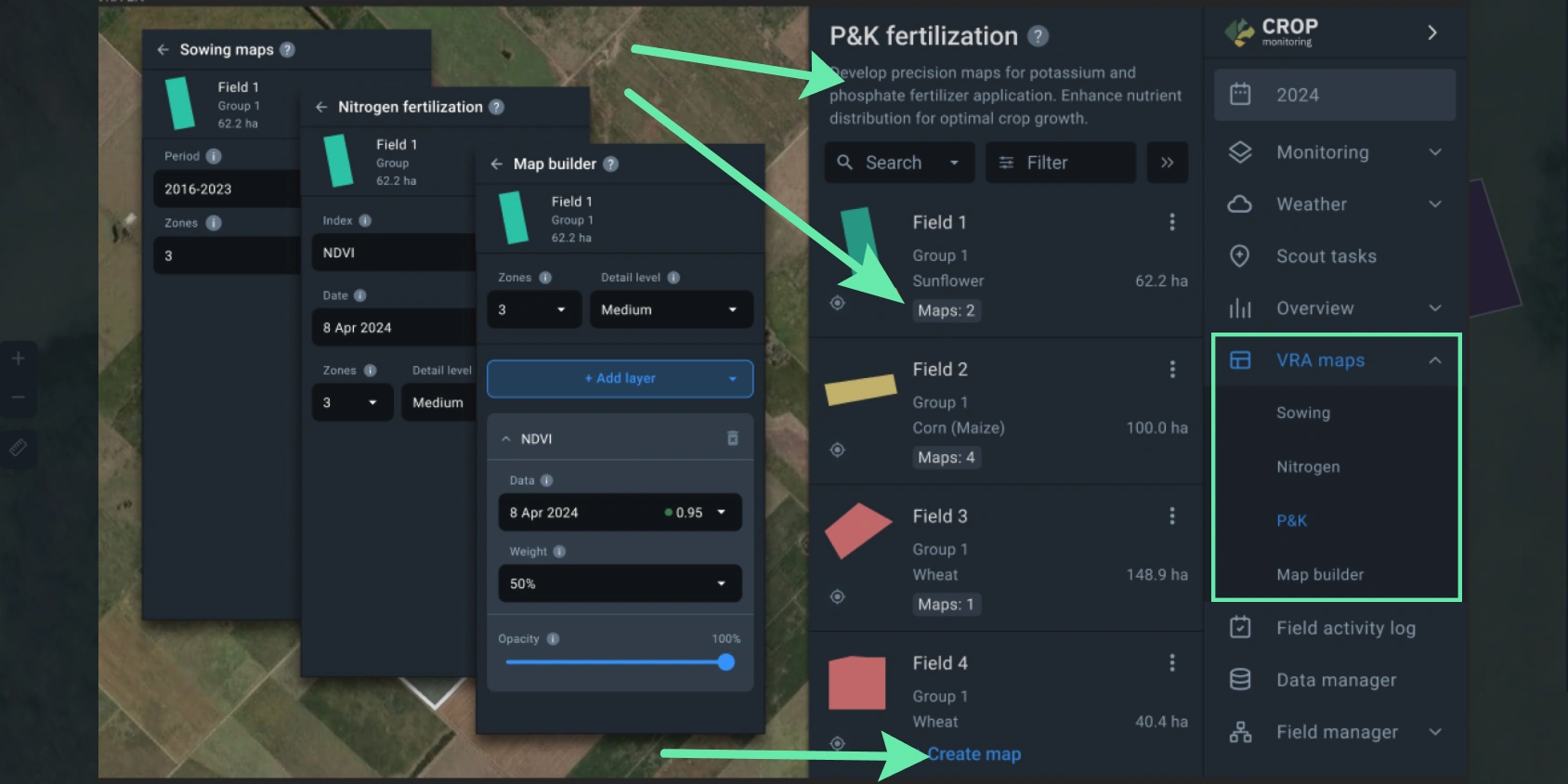
The map creation flow has also been streamlined. Now, when users select a menu item like “Sowing map”, they are directed to the list of fields, which displays the number of maps created for each field. Accessing a field page will show previously created maps relevant to the selected section rather than all maps. Additionally, we’ve made minor cosmetic changes to the Parameters and Zones tabs.
In the second iteration, we have added a Soil erosion layer calculation to the VRA maps. This new feature, based on an algorithm developed by our scientists, enhances the accuracy of differential application maps.
The addition of soil erosion maps as a layer in the calculation of differential application maps marks a significant step forward in adopting precision agriculture practices for our users.
Crop Varieties Integration
We are excited to introduce a new parameter for fields: Crop Variety. We have already loaded varieties for 20 crops: Potatoes, Tomatoes, Corn (Maize), Sugarcane, Soybeans, Spring and Winter barley, Winter wheat, Rapeseed, Winter rapeseed, Sunflower, Cotton, Wheat, Almonds, Rice, Chickpea, Sugar beet, Peas, Oats and Sorghum. These varieties are sourced from open state variety registers of the USA, Australia, Argentina, Brazil, Ukraine, and Canada, and use the maturity groups of their respective crops.
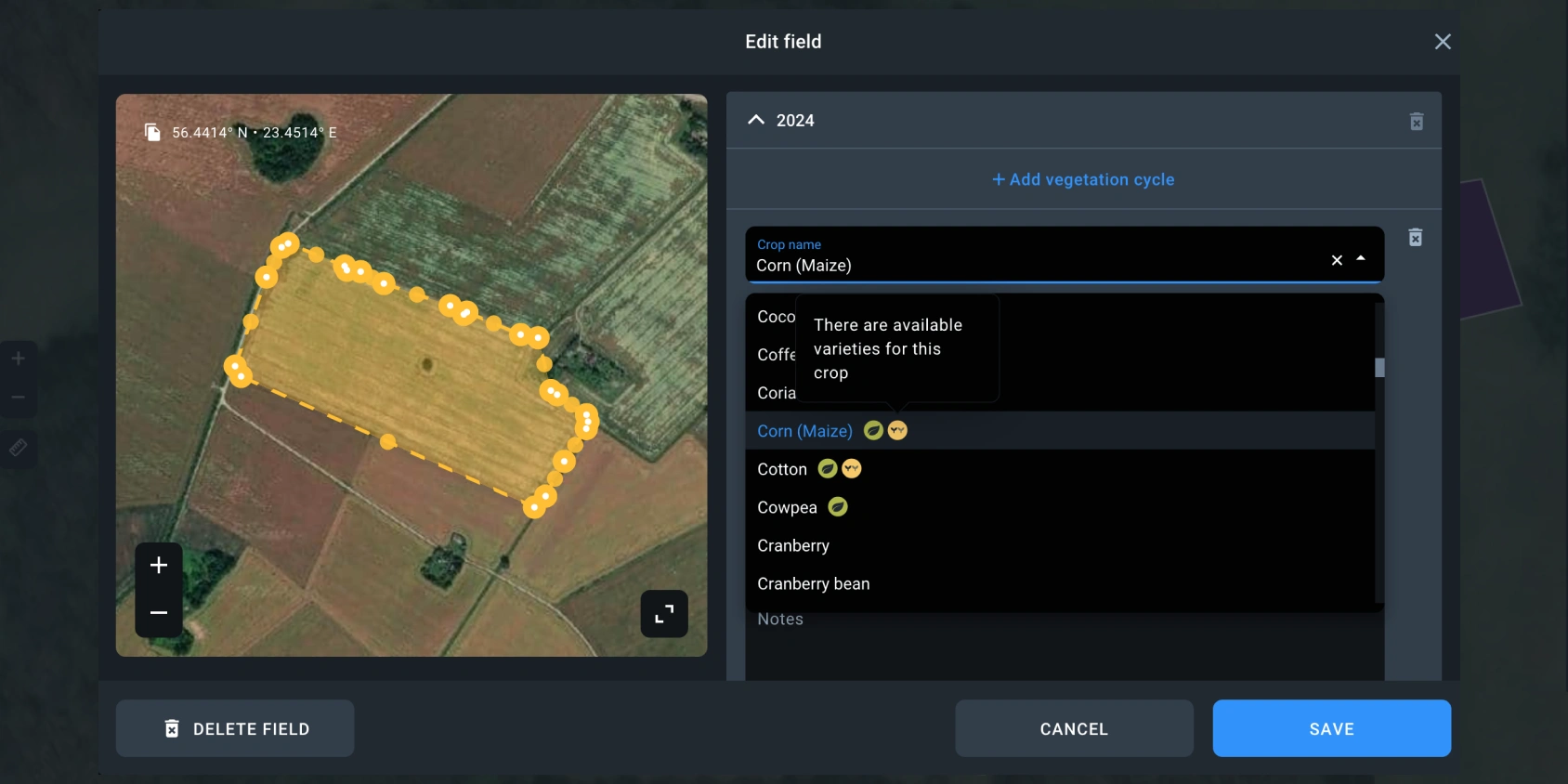
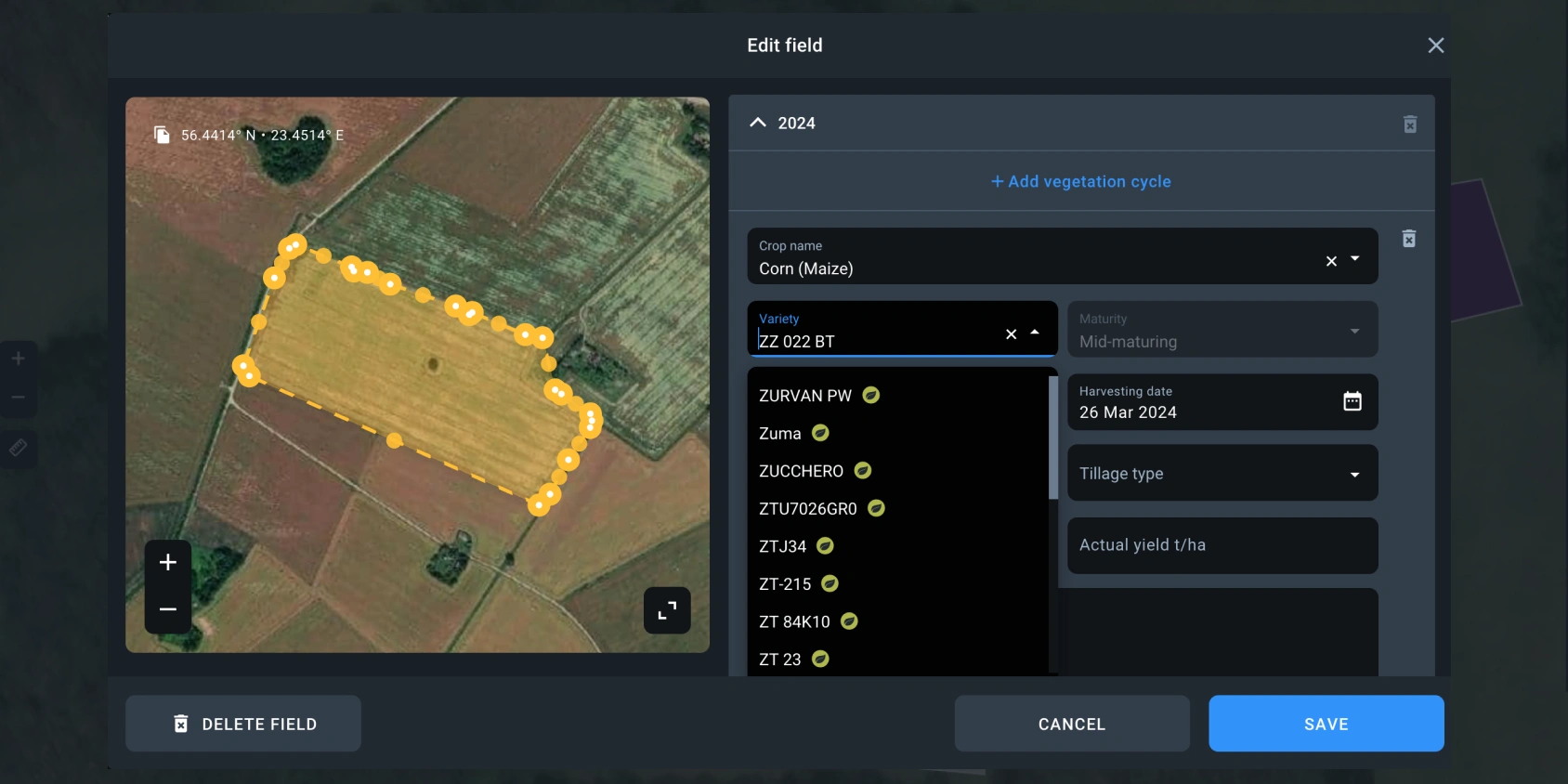
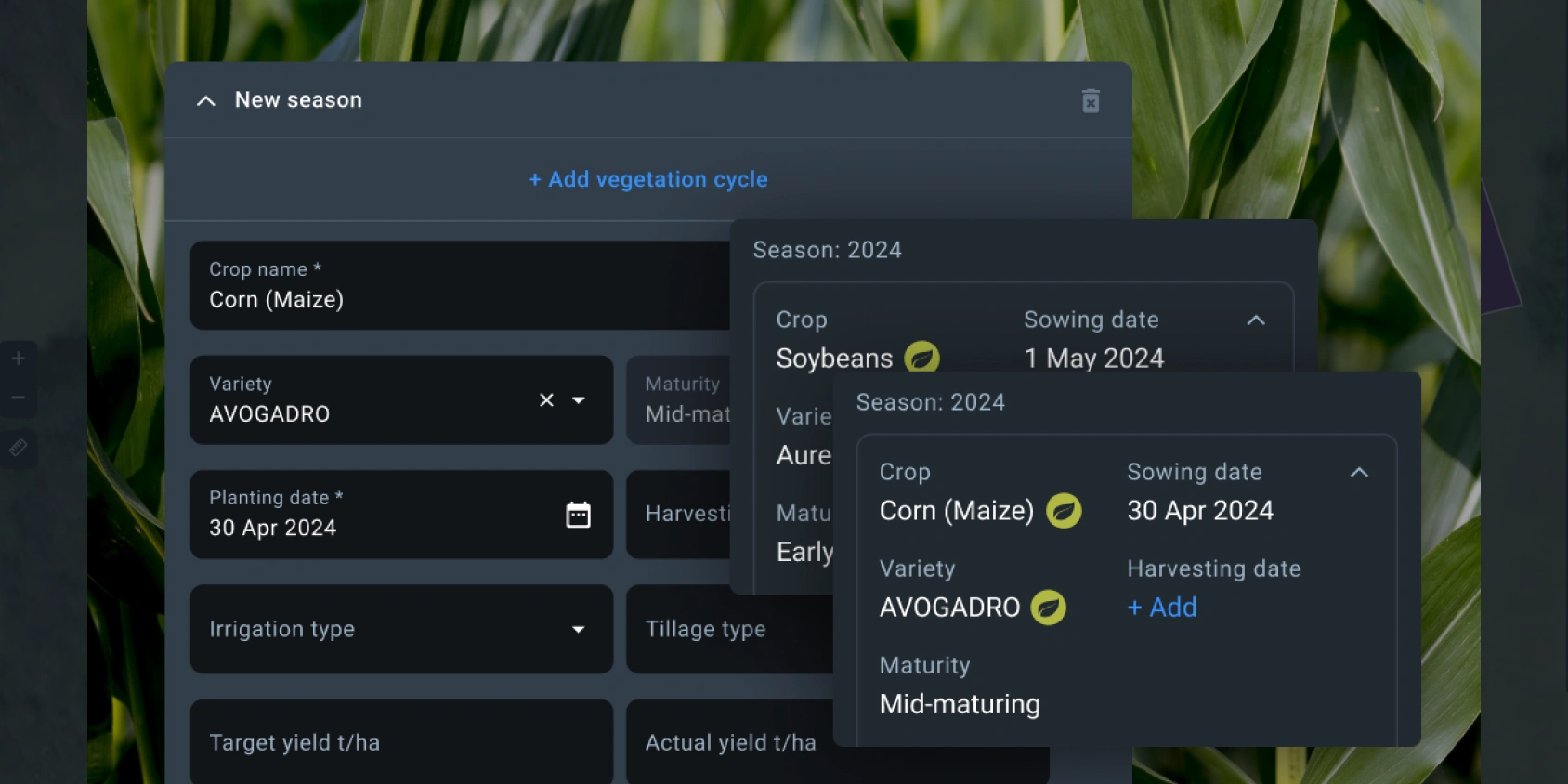
Currently, the variety parameter is available in all sections of the EOSDA Crop Monitoring web platform, as well as in the mobile application.
This new feature allows users to analyze and track fields at the crop variety/hybrid level. By entering crops by field at the variety/hybrid level, users fill in their crop rotation history. This ensures that each new season they make better choices about how to grow crops and conserve soil fertility based on their crop rotation history.
Future developments include adding filters by variety to the mobile app, incorporating more crop varieties and improving the growth stage tracking for these varieties.
Risk Map On The Global View
The Global View’s image source selector now allows enabling the Risk Map layer. Users can now select Risk types from the Risk type selector, which currently includes Index Risk and Disease Risk. Fields are color-coded based on the Risk level: No Risk, Low, Medium, and High. By clicking on the Risk icon on a field, users can access detailed information about the specific risk.
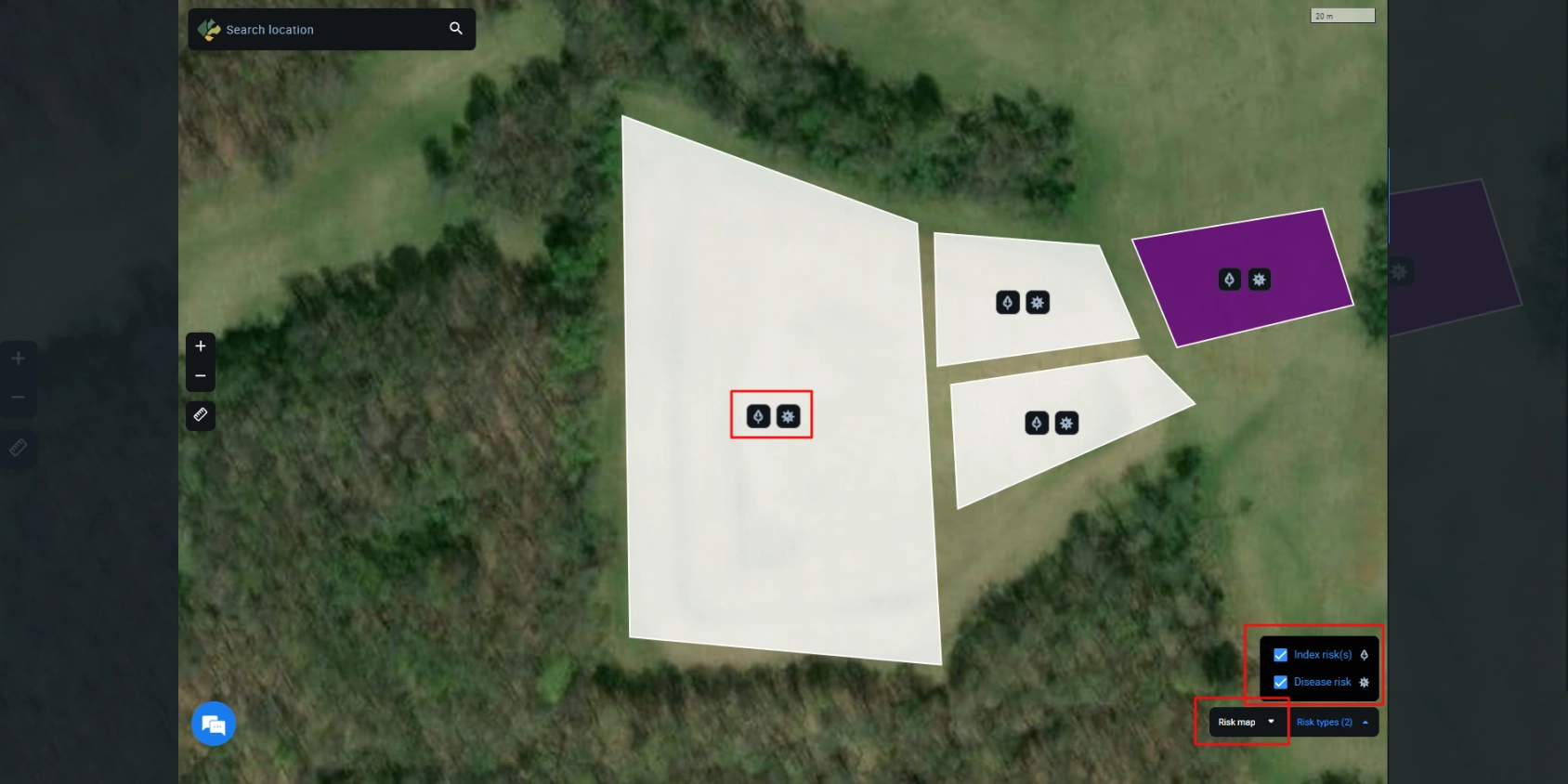
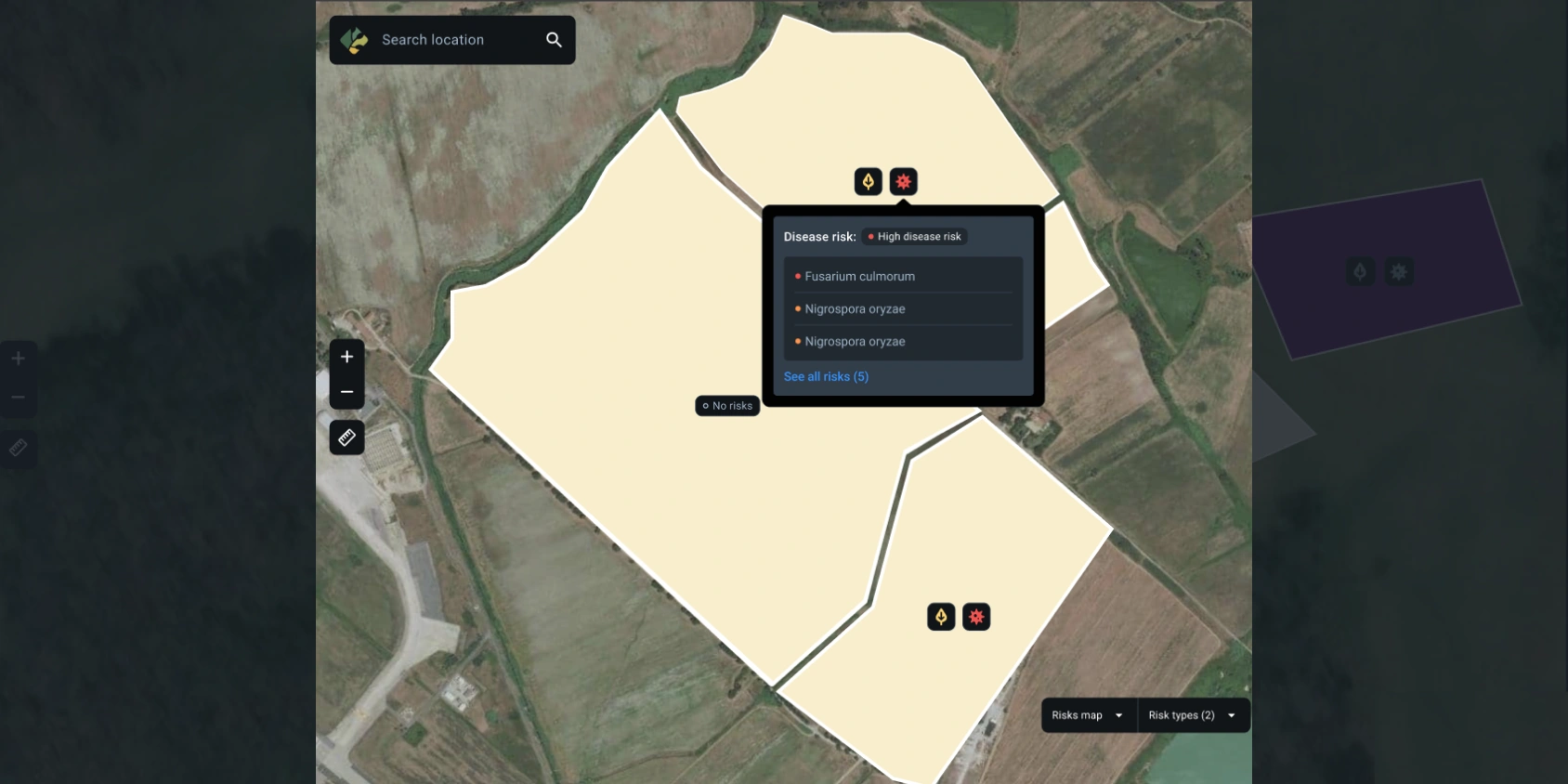
Future enhancements will add Cold stress risk, Heat stress risk, Rainfall risk, and Wind risk for specific growth stages of certain crops as free add-ons upon request.
Free Access To Davis Stations For All EOSDA Crop Monitoring Users
We are excited to inform you that you can now connect your Davis stations to EOSDA Crop Monitoring for free. By combining satellite data with data from such stations, you can get even more accurate analytics on things like growth stage detection and risk detection from the platform.
Crop Management Guide Is Now In EOSDA Crop Monitoring
Now you can access our Crop management guide through EOSDA Crop Monitoring on the Field Analytics page. This resource offers vital insights for effectively managing your crops throughout the growing season.
Each crop requires an individual approach, and our crop management guide on EOSDA Crop Monitoring details best practices and examples for optimal results. Find it on the Field Analytics page to enhance your crop production efficiently.
Upcoming enhancements to the user guide will include Field manager, Crop rotation, Field groups, Season analytics, and Upload fields with parameters.
We hope these updates enhance your experience with EOSDA Crop Monitoring and provide you with the tools needed to optimize your agricultural practices. Your feedback is invaluable to us as we strive to continuously improve our platform. Please share your thoughts and suggestions via our contact form, as they help us develop features that meet your needs and support your success in the field.
About the author:
Maksym Sushchuk is at the forefront of realizing EOSDA's vision to make space tech a global driver of sustainability on Earth. He has over 15 years of experience in journalism and content creation for prominent Ukrainian startups, charitable funds and ESG businesses. As Head and Co-founder of PR Army Maxim brings attention to the human and social tolls of the aggression against Ukraine.
Recent articles

Analyze 2025 & Plan Your Best Year Yet: LandViewer Christmas Offer
It’s the most wonderful time of the year! The Christmas holidays are here, and so is your chance to analyze 2025 and plan a prosperous 2026 with more affordable Pro plans in LandViewer.

EOSDA Models Climate Change Impact On Sugarcane Yields
EOSDA modeled future temperature, rainfall, and other climate impacts on Veracruz sugarcane. The results help growers plan long-term adaptation strategies, including timing, varieties, and irrigation.

EOSDA LandViewer Black Friday Sale: Exclusive Offers & Giveaway
This Black Friday, LandViewer offers new users the chance to save on monthly plans, get extra months with yearly subscriptions, and participate in a free annual plan giveaway.